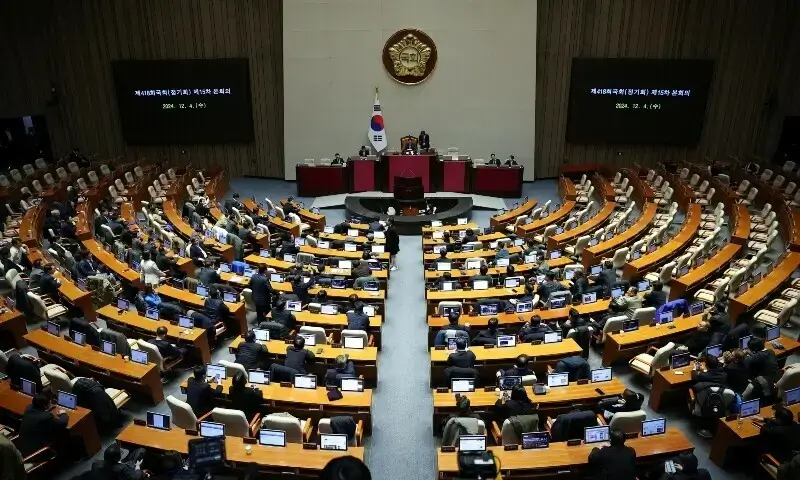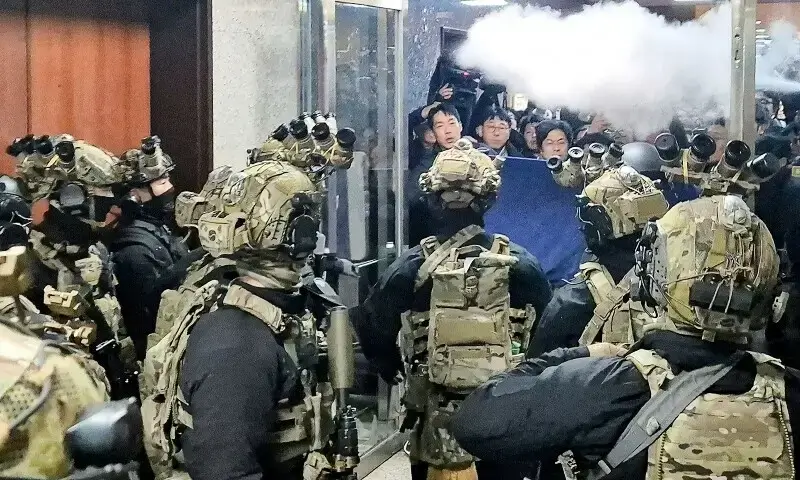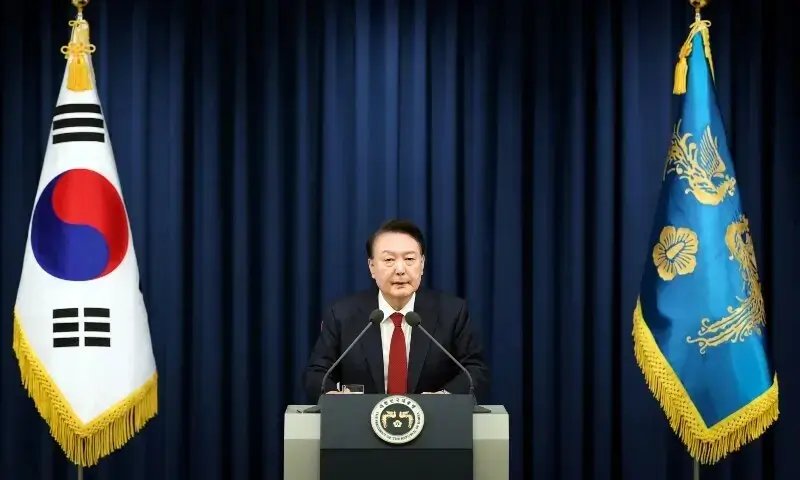Unprecedented Martial Law Political Crisis
In a dramatic late-night television broadcast, President Yoon Suk Yeol surprised the country by announcing martial law, which was the first time it had been implemented in South Korea since 1980. The nation’s political system was thrown off balance by the unusual action right away.
Martial Law Justification
Yoon’s declaration targeted what he called “pro-North Korean anti-state forces” and accused the opposition of:
- Taking over the legislative process
- threatening the constitutional order
- paralyzing the legal and administrative systems
Parliamentary Rebellion Against Martial Law
In a swift counter-move, the National Assembly:
- approved a motion to end martial law.
- declared the presidential announcement to be untrue.
- showed resounding opposition in parliament

Visual evidence emerged of heightened tension, with:
- Troops wearing helmets trying to enter the assembly hall
- Fire extinguishers are being used by parliamentary assistants to block soldiers.

Economic and International Implications of Martial Law
Market Response
- Korean won has dropped sharply against the US dollar
- Market stabilisation measures were prepared by the central bank.
- An urgent economic meeting was called by the finance minister.
International Monitoring
- United States closely tracking the situation
- 28,500 US troops remain stationed in South Korea
- No immediate comment from Japan or other regional powers
Opposition’s Counterattack to Martial Law
Lee Jae-myung, the leader of the opposition, described the situation as one in which tanks and armed troops might rule the nation and issued a warning of an impending economic catastrophe. The incident was seen as a significant democratic crisis by former President Moon Jae-in.
Root of the Martial Law Conflict
The political standoff stems from multiple contentious issues:
- Opposition’s attempt to impeach top prosecutors
- Rejection of government budget proposal
- Dispute over budget cuts exceeding 4 trillion won
- Ongoing protests demanding investigation into allegations of fraud involving the first lady
Historical Context of Martial Law
With periods of authoritarian rule throughout its complicated political history, South Korea made the transition to democracy in the 1980s. The imposition of martial law marks a substantial divergence from the nation’s democratic path.
Unresolved Questions About Martial Law
Key uncertainties remain:
- The precise definition of “pro-North Korean anti-state forces”
- Specific measures to be implemented under martial law
- Long-term political and economic consequences
Presidential Rhetoric on Martial Law
Yoon justified the martial law as necessary to “protect the free Republic of Korea” and eliminate forces he claims are threatening the nation’s constitutional order.
Ongoing Developments in Martial Law Crisis
There is significant potential for more political escalation as the situation continues to change quickly. The developing crisis is being closely watched by both domestic political actors and international observers.
The declaration challenges South Korea’s democratic institutions and poses significant questions about the country’s political system’s future, marking an unprecedented juncture in the country’s political history.

